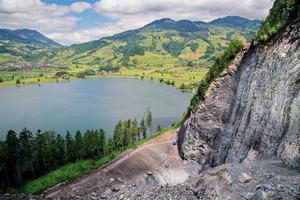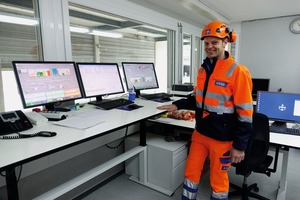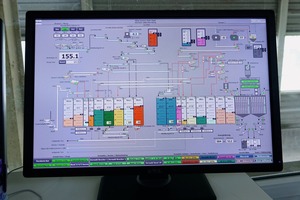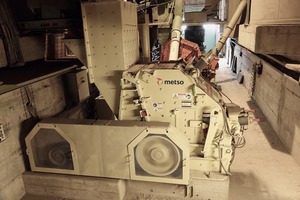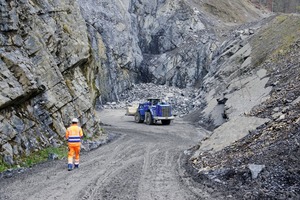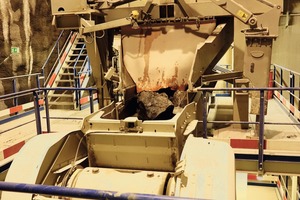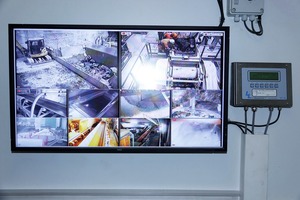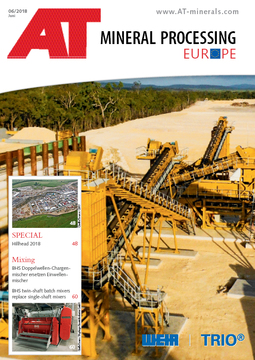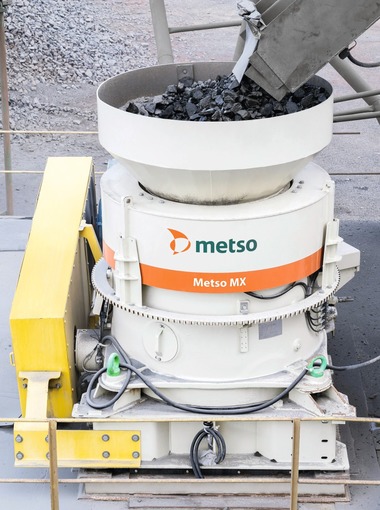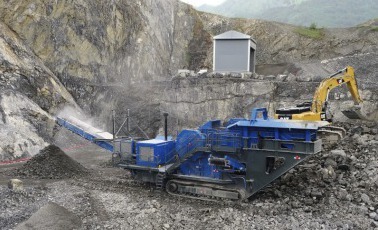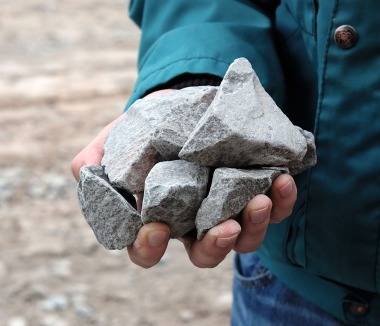Swiss precision engineering: final crushing at the Zingel quarry
Close cooperation between Drossard Sales & Service and the management of the Zingel in Seewen gravel and concrete plant started no less than seven years ago. Since then, the joint target set by the operators and by Metso dealers Drossard has been optimisation of process operations and procedures at this Swiss quarrying and preparation location.
The primary crusher installed five years ago by Drossard during the development of the new winning zone within the quarry was the result of a preceding two-year evaluation phase. Metso’s new C120 series of jaw crushers had just arrived on the market at this time and fitted ideally into the Zingel system. At that stage, a decision had been taken, on the basis, in particular, of convincing performance and machine dynamics, in favour of the new, stationary jaw crusher, a step which has proven even today to have been worthwhile for the quarry.
In early 2017, KIBAG again invested in a Metso machine – this time, the NP1110 impact crusher, as a final crusher for ultra-fine particle fractions (feed material: 0/16 mm). Here, the machine’s finely adjustable automated control system assures constant and uniform product quality. An optimum particle geometry can be achieved during the continuous preparation process, depending on throughput rate, milling bed positions and machine speed.
The contract for the new NP1110 was awarded to Swiss Metso dealer Josef Drossard, since he was well acquainted with the system at the Zingel quarry and with the associated technical preconditions and requirements, and since the use of the stationary primary crusher had already proven its worth.
One of KIBAG’s main requirements was a significant increase in and optimisation of the sand fraction of production using the new crusher. The potentials for flexible control provided by the NP1110 were thus a feature welcomed by the operator. Prior to purchase, analyses of the mineral material quarried were performed and the data obtained also incorporated into Metso’s latest “Bruno” crushing simulation software. The results thus forecast were not only highly promising, they were also confirmed in practice after ultimate installation of the machine at the quarry.
After commissioning, it was demonstrated that the results actually obtained concurred 99 % with the results predicted by the Bruno simulation software. “This machine immediately enabled us to output high-quality products. In addition to the accustomed service culture assured by Josef Drossard, our local Metso dealer, we were also convinced by the high service-lives of the chrome-ceramic impact bars installed in the new Metso crusher. The servicing intervals are very pleasingly long,” affirms workshop manager Kaspar Herger. The long milling beds and higher material residence time in the machine mean that interparticulate comminution in the Metso final crusher is much greater than in its predecessor. Both the two milling beds and the crusher gap can be automatically set, an operation which is generally performed once each day via the control system. Using the NP1110, the Zingel quarry also benefits from a greater degree of comminution. The fact that the crusher’s speed can be flexibly controlled is a benefit of the built-in frequency converter, which covers a large speed range.
Zingel was also intending to invest in a further crusher in late 2017/early 2018, in order to expand production from the second crushing stage. Drossard has already maximised the plant’s capacities via corresponding machine technology, without changing the site’s production and conveying arrangements. As from a certain point, expansions of productivity are linked to the necessity of also taking account of potential bottlenecks, such as production and conveying equipment, silo capacities and landfill space. In the case of Zingel, the 400 m long belt system would need to be uprated, which would exceed current possibilities and is also, from a commercial viewpoint, not planned for the foreseeable future. The selection of new machines which will not only boost productivity but also fit exactly into the preparation process is always a demanding task at such a well established plant as Zingel. There can, in this context, be no question that it is necessary to take account of the specific requirements for particle-size distribution and particle geometry when installing new crushers.
In the field of medium-fine crushing, the replacement of an impact mill by a cone crusher for the 16/40 feed material fraction is also planned for the future. Metso’s GP 220 is under consideration for the new stationary machine, and will be intended to replace an old machine and improve particle-geometry quality.
Close “cooperation” between the GP 220 and the new NP1110 impact crusher will also make it possible to increase the sand production percentage further at any time in the future, another factor of interest to the operators. This step in any case also smoothes the path to further increased system flexibility. Depending on market and storage-depot situation, part of the GP 220’s end product could also then be finally processed via the NP1110 to produce sand. “A great boost has been given to our production. The new machine enables us to produce higher-quality sands and a greater percentage of the fractions of our choice. The screening curve is also much more constant,” workshop foreman Konrad Schorno continues. The sand fraction (0/4 mm) of the feed material (0/16 mm) is initially around 28 % – but approximately 84 % after preparation using the NP1110 impact mill. The rail ballast fraction (16/63 mm) makes up more than 50 % of overall production, and is thus the Zingel quarry’s principal product; it is followed by gravel and crushed sands for use as asphalt additives (in the customary fractions of 0/2, 2/4, 4/8, 8/11, 11/16 and 16/22 mm).
The C120 primary crusher currently processes 350 t of material per hour. Due to the bottleneck situation caused by the overland belt conveyor, however, only 170 t/h can at present be directly further processed. The remaining amount of material is fed via the excavated cavern to a temporary storage depot, from which it is reclaimed at a later time for further processing. Around 80 t of the quantity from the primary crusher immediately processed is used for further crushing to make rail ballast. This product can be immediately loaded and dispatched, thanks to the location’s direct rail connection. This in itself is something of a special feature, since access to quarries in Switzerland is generally anything but optimum. The difficulties involved can be judged by the fact alone that it was necessary to deliver the primary crusher, with its total weight of 40 tonnes, in individual parts due to the steep access route, and only finally assemble the machine at its ultimate installation location.
“The operators have made positive gains in all respects and in all requirements on the crushing situation. And none of their wishes needed to be resolved by any compromise,” notes Josef Drossard. Over the years, KIBAG Seewen has optimised its quarrying and preparation concept. For the future, the company puts all its faith in remaining technically up-to-date and in thus operating more productively and more flexibly.

